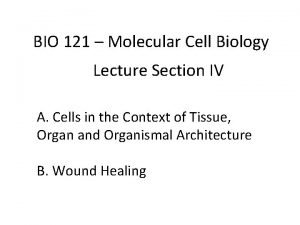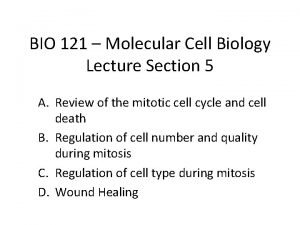Lecture Power Point Chemistry The Molecular Nature of



































- Slides: 35

Lecture Power. Point Chemistry The Molecular Nature of Matter and Change Seventh Edition Martin S. Silberberg and Patricia G. Amateis 9 -1 Copyright Mc. Graw-Hill Education. All rights reserved. No reproduction or distribution without the prior written consent of Mc. Graw-Hill Education.

Chapter 9 Models of Chemical Bonding 9 -2

Models of Chemical Bonding 9. 1 Atomic Properties and Chemical Bonds 9. 2 The Ionic Bonding Model 9. 3 The Covalent Bonding Model 9. 4 Bond Energy and Chemical Change 9. 5 Between the Extremes: Electronegativity and Bond Polarity 9. 6 An Introduction to Metallic Bonding 9 -3

Figure 9. 1 9 -4 A comparison of metals and nonmetals.

Types of Chemical Bonding Ionic bonding involves the transfer of electrons and is usually observed when a metal bonds to a nonmetal. Covalent bonding involves the sharing of electrons and is usually observed when a nonmetal bonds to a nonmetal. Metallic bonding involves electron pooling and occurs when a metal bonds to another metal. 9 -5

Figure 9. 2 9 -6 Three models of chemical bonding.

Figure 9. 3 9 -7 Gradations in bond type among Period 3 (black type) and Group 4 A (red type) elements.

Lewis Electron-Dot Symbols To draw the Lewis symbol for any main-group element: • Note the A-group number, which gives the number of valence electrons. • Place one dot at a time on each of the four sides of the element symbol. • Keep adding dots, pairing them, until all are used up. Example: Nitrogen, N, is in Group 5 A and therefore has 5 valence electrons. • or • N • or • N • • • • 9 -8 or • • N • •

Lewis Symbols and Bonding For a metal, the total number of dots in the Lewis symbol is the number of electrons the atom loses to form a cation. For a nonmetal, the number of unpaired dots equals - the number of electrons the atom gains to form an anion - or the number it shares to form covalent bonds. The octet rule states that when atoms bond, they lose, gain, or share electrons to attain a filled outer level of 8 electrons (or 2, for H and Li). 9 -9

Figure 9. 4 Lewis electron-dot symbols for elements in Periods 2 and 3. 9 -10

The Ionic Bonding Model An ionic bond is formed when a metal transfers electrons to a nonmetal to form ions, which attract each other to give a solid compound. The total number of electrons lost by the metal atom(s) equals the total number of electrons gained by the nonmetal atom(s). 9 -11

Figure 9. 5 Three ways to depict electron transfer in the formation of Li+ and F–. Electron configurations Li 1 s 22 s 1 + F 1 s 22 p 5 1 s 22 p 6 → Li+ 1 s 2 + F– Orbital diagrams Li ↑↓ ↑ + 1 s 2 s 2 p F ↑↓ ↑↓ ↑ 1 s 2 s 2 p Li+ F- ↑↓ 1 s 2 s 2 p ↑↓ ↑↓ ↑↓ 1 s 2 s 2 p Lewis electron-dot symbols Li+ + • • F • • – • • 9 -12 • • Li • • F • •

Sample Problem 9. 1 Depicting Ion Formation PROBLEM: Use partial orbital diagrams and Lewis symbols to depict the formation of Na+ and O 2– ions from the atoms, and determine the formula of the compound formed. O 9 -13

Sample Problem 9. 1 Na ↑ 3 s Na + 3 p O 2 s ↑ 3 s ↑↓ 3 p 2 Na+ + O 2– ↑↓ ↑↓ 2 s 2 p The formula is Na 2 O 9 -14 ↑↓ ↑ 2 p ↑

Figure 9. 6 9 -15 The exothermic formation of sodium bromide.

Figure 9. 7 9 -16 The Born-Haber cycle for lithium fluoride.

Periodic Trends in Lattice Energy Lattice energy is the energy required to separate 1 mol of an ionic solid into gaseous ions. Lattice energy is a measure of the strength of the ionic bond. Coloumb’s Law Electrostatic energy 9 -17 charge A x charge B distance cation charge x anion charge cation radius + anion radius DHolattice

Periodic Trends in Lattice Energy Lattice energy is affected by ionic size and ionic charge. As ionic size increases, lattice energy decreases. Lattice energy therefore decreases down a group on the periodic table. As ionic charge increases, lattice energy increases. 9 -18

Figure 9. 8 9 -19 Trends in lattice energy.

Sample Problem 9. 2 Predicting Relative Lattice Energies from Ionic Properties PROBLEM: Use ionic properties to choose the compound in each pair with the larger lattice energy: (a) Rbl or Na. Br; (b) KCI or Ca. S. 9 -20

Properties of Ionic Compounds • Ionic compounds tend to be hard, rigid, and brittle, with high melting points. • Ionic compounds do not conduct electricity in the solid state. – In the solid state, the ions are fixed in place in the lattice and do not move. • Ionic compounds conduct electricity when melted or dissolved. – In the liquid state or in solution, the ions are free to move and carry a current. 9 -21

Figure 9. 9 9 -22 Why ionic compounds crack.

Figure 9. 10 Solid ionic compound 9 -23 Electrical conductance and ion mobility. Molten ionic compound Ionic compound dissolved in water

Table 9. 1 Melting and Boiling Points of Some Ionic Compounds Compound bp (ºC) Cs. Br 636 1300 Na. I 661 1304 Mg. Cl 2 714 1412 KBr 734 1435 Ca. Cl 2 782 >1600 Na. Cl 801 1413 Li. F 845 1676 KF 858 1505 2852 3600 Mg. O 9 -24 mp (ºC)

Figure 9. 11 Ion pairs formed when an ionic compound vaporizes. Interionic attractions are so strong that when an ionic compound is vaporized, ion pairs are formed. 9 -25

Figure 9. 12 9 -26 Covalent bond formation in H 2.

Figure 9. 13 Distribution of electron density in H 2. A: Electron density doubles with each concentric curve. 9 -27 B: The highest regions of electron density are shown as peaks.

Bonding Pairs and Lone Pairs Atoms share electrons to achieve a full outer level of electrons. The shared electrons are called a shared pair or bonding pair. The shared pair is represented as a pair of dots or a line: • • H H or H–H An outer-level electron pair that is not involved in bonding is called a lone pair, or unshared pair. • • 9 -28 or • • F–F • • • • F F • •

Properties of a Covalent Bond The bond order is the number of electron pairs being shared by a given pair of atoms. A single bond consists of one bonding pair and has a bond order of 1. The bond energy (BE) is the energy needed to overcome the attraction between the nuclei and the shared electrons. The stronger the bond the higher the bond energy. The bond length is the distance between the nuclei of the bonded atoms. 9 -29

Trends in bond order, energy, and length For a given pair of atoms, a higher bond order results in a shorter bond length and higher bond energy. For a given pair of atoms, a shorter bond is a stronger bond. Bond length increases down a group in the periodic table and decreases across the period. Bond energy shows the opposite trend. 9 -30

Table 9. 2 Average Bond Energies (k. J/mol) and Bond Lengths (pm) 9 -31

Figure 9. 14 Internuclear distance (bond length) Bond length and covalent radius. Covalent radius Internuclear distance (bond length) 72 pm Internuclear distance (bond length) Covalent radius 100 pm 9 -32 Covalent radius 114 pm Internuclear distance (bond length) Covalent radius 133 pm

Table 9. 3 The Relation of Bond Order, Bond Length, and Bond Energy 9 -33

Sample Problem 9. 3 Comparing Bond Length and Bond Strength PROBLEM: Using the periodic table, but not Tables 9. 2 or 9. 3, rank the bonds in each set in order of decreasing bond length and decreasing bond strength: (a) S–F, S–Br, S–Cl 9 -34 (b) C=O, C–O, CΞO

Figure 9. 15 Strong forces within molecules and weak forces between them. 9 -35
 01:640:244 lecture notes - lecture 15: plat, idah, farad
01:640:244 lecture notes - lecture 15: plat, idah, farad Molecular biology lecture
Molecular biology lecture Enteroendocrine cell
Enteroendocrine cell Cleavage
Cleavage Covalent bond boiling point
Covalent bond boiling point Giant molecular structure vs simple molecular structure
Giant molecular structure vs simple molecular structure Giant molecular structure vs simple molecular structure
Giant molecular structure vs simple molecular structure Power triangle formula
Power triangle formula Power bi training powerpoint
Power bi training powerpoint Point point power
Point point power Advanced inorganic chemistry lecture notes
Advanced inorganic chemistry lecture notes Atmospheric chemistry lecture notes
Atmospheric chemistry lecture notes Democritus atomic model diagram
Democritus atomic model diagram Ap chemistry unit 9 notes
Ap chemistry unit 9 notes Power system dynamics and stability lecture notes
Power system dynamics and stability lecture notes Zline 667-36
Zline 667-36 Power semiconductor devices lecture notes
Power semiconductor devices lecture notes Switch mode power supply lecture notes
Switch mode power supply lecture notes Power system dynamics and stability lecture notes
Power system dynamics and stability lecture notes What is the point of uchendu’s lecture to okonkwo?
What is the point of uchendu’s lecture to okonkwo? Nature and nature's laws lay hid in night
Nature and nature's laws lay hid in night Nature nature controversy
Nature nature controversy Chapter 4 basic food chemistry the nature of matter
Chapter 4 basic food chemistry the nature of matter Chapter 4 basic food chemistry the nature of matter
Chapter 4 basic food chemistry the nature of matter Chapter 4 basic food chemistry the nature of matter
Chapter 4 basic food chemistry the nature of matter Ib chemistry organic chemistry
Ib chemistry organic chemistry Inorganic vs organic chemistry
Inorganic vs organic chemistry Hát kết hợp bộ gõ cơ thể
Hát kết hợp bộ gõ cơ thể Slidetodoc
Slidetodoc Bổ thể
Bổ thể Tỉ lệ cơ thể trẻ em
Tỉ lệ cơ thể trẻ em Gấu đi như thế nào
Gấu đi như thế nào Tư thế worm breton
Tư thế worm breton Alleluia hat len nguoi oi
Alleluia hat len nguoi oi Các môn thể thao bắt đầu bằng từ đua
Các môn thể thao bắt đầu bằng từ đua Thế nào là hệ số cao nhất
Thế nào là hệ số cao nhất



























































